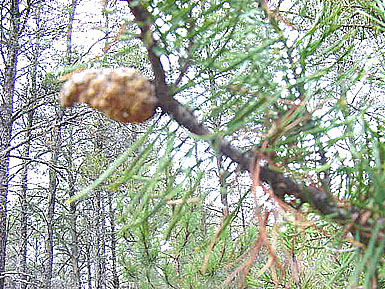Form: This tree is medium in size and reaches 70 to 80 ft. in height and 1 to 1 1/2 ft. dbh. It has an irregular crown and is a poor self pruner.
Needles:
Arrangement: 2 per fascicle
Length: 3/4- 1'' long
Shape: slightly flattened and twisted; widely forking; shiny green
Other: concave on the inner surface

Bark: The bark is grayish-brown in color and thin with narrow scaly ridges.

Cones: The cones are serotinous, oblong, and light brown to silvery in color.

Distinguishing characteristics: This species has oblong serotinous cones. The needles are 3/4" to 1" in length and it has a grayish-brown bark.
Range: This is a northern species. It occurs mainly around the Great Lakes area and the north eastern U.S.
Silvics: This species is intolerant and occurs on sandy soils, dunes, on rock outcrops. It is often found in extensive pure stands.
Ecological and cultural importance: This trees wood is used in pulpwood, fence posts and railroad ties. It is also a pioneer species. The endangered Kirtland's warbler nests in large stands of young jack pine. The seeds are eaten by a variety of birds and rodents.